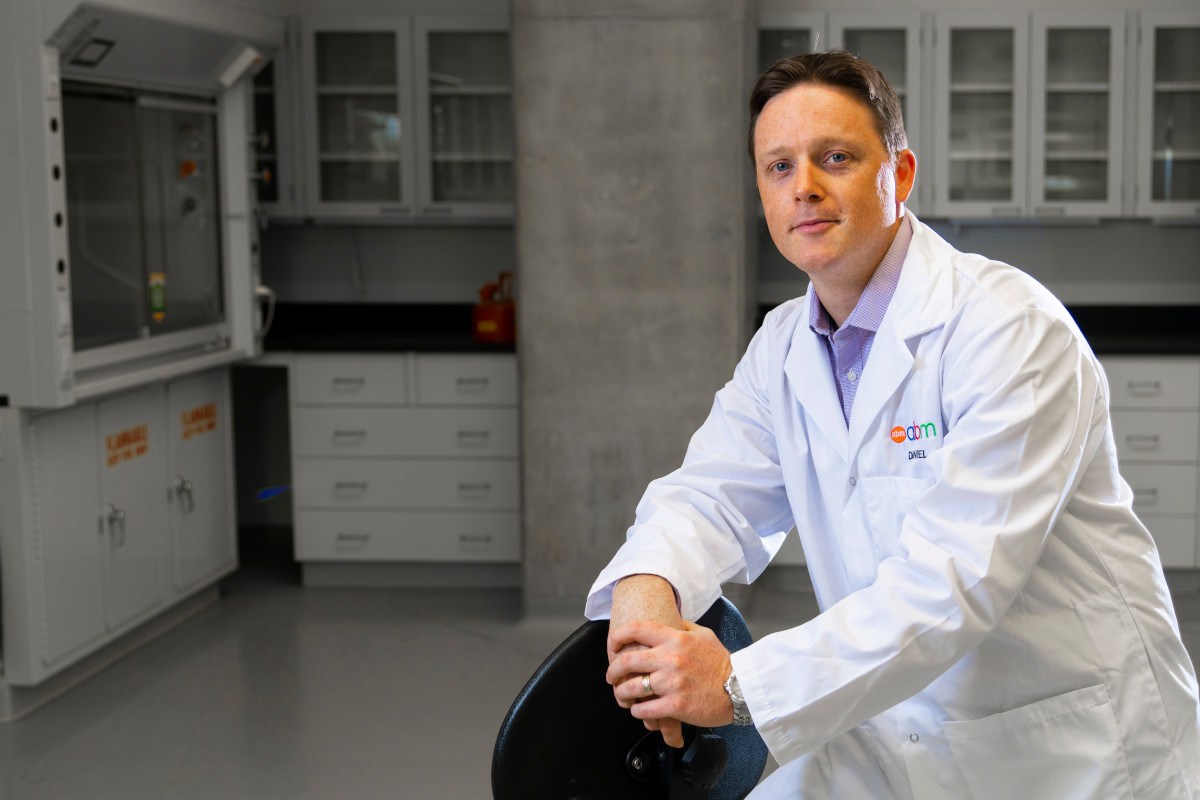Biophysicist launches drug resistance research program
Katie Willis - 28 May 2020

Biophysicist Daniel Charlebois is taking on the problem of drug resistance with new research funded by the New Frontiers in Research Fund. Photo credit: John Ulan
As the COVID-19 pandemic sweeps the world, citizens are more conscious than ever of the importance of the need for innovative treatments for disease. One such topic is drug resistance. How does drug resistance develop? What new therapies can be developed to tackle drug-resistant infections? And how can we extend the lifespan of existing drugs?
It is these questions that biophysicist Daniel Charlebois is tackling in a newly funded research project. An assistant professor in the University of Alberta’s Department of Physics, Charlebois has received $250,000 in funding over the next two years from the New Frontiers in Research Fund (NFRF), a federal research funding initiative. NFRF funding is designed to support high-risk, high-reward research.
Learn more about Charlebois’ research program.
How will the funding support your research?
The New Frontiers in Research Fund is extremely important as it supports high-risk, high-reward interdisciplinary research that many other funding agencies do not fund.
This funding is to support an unconventional research project that will combine mathematical modeling with synthetic biology to study drug resistance. This research will be critical for gaining a deeper understanding of the drug resistance process, discovering new antimicrobial compounds, and identifying novel drug treatment strategies to extend the lifespan of existing antibiotic and antifungal drugs.
This funding will support the hiring of additional highly qualified personnel and secure specialized experimental equipment for my drug resistance research program.
What outcomes are you hoping for after the two years of the project?
Over the next two years, we will aim to uncover the interplay between different drug resistance mechanisms, develop new mathematical models, and discover novel therapeutic compounds and strategies against pathogenic yeast.
First, we will develop mathematical models to better predict the evolution of drug resistance. Then we will use the predictions from these models to identify new antimicrobial compounds and drug treatment strategies that may overcome drug resistance. Finally, we will test these novel antimicrobial compounds and strategies on genetically engineered yeast strains in the laboratory.
This research will form the basis for our future drug resistance studies on pathogenic bacteria and fungi isolated from patient samples.
How is the University of Alberta uniquely positioned to push this area of inquiry further?
The University of Alberta is expanding its capacity in the field of biophysics—we are developing two new biophysics courses and we now have several faculty members specializing in biophysics in the Department of Physics. These courses will facilitate the training of undergraduate and graduate students for our research programs, and multiple research groups provide the critical mass required for successful, collaborative research. This emphasis on biophysics at the University of Alberta will enable cutting-edge research and breakthroughs on important problems like drug resistance.
My co-applicant, Michael Manhart, is a junior group leader at the Institute of Integrative Biology at ETH Zurich. He will apply his expertise to analyze the DNA sequence data generated from our microbial evolution experiments to identify drug resistance mutations. My collaborator, Jack Tuszynski, is a biophysics professor in the Department of Physics and in the Faculty of Medicine & Dentistry’s Department of Oncology at the University of Alberta. He will perform molecular dynamics simulations to identify new antimicrobial compounds, that when combined with existing antibiotic and antifungal drugs, may overcome drug resistance.